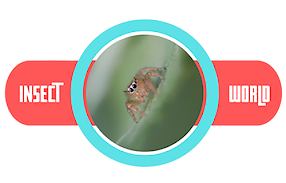 |
Colonus is a genus of jumping spiders belonging to the family Salticidae. These spiders are native to North and South America, with their distribution spanning from New York to Argentina. A distinctive feature of Colonus species is the presence of two pairs of bulbous spines on the ventral side of the first tibiae, although the exact function of these spines remains unknown.
Notably, there was a taxonomic change in the classification of Colonus. In 1903, Eugène Simon declared Colonus as a junior synonym of Thiodina. However, this classification was later revised by Bustamante, Maddison, and Ruiz in 2015, reinstating Colonus as a valid genus within the jumping spider family Salticidae.
Notably, there was a taxonomic change in the classification of Colonus. In 1903, Eugène Simon declared Colonus as a junior synonym of Thiodina. However, this classification was later revised by Bustamante, Maddison, and Ruiz in 2015, reinstating Colonus as a valid genus within the jumping spider family Salticidae.
As of my last knowledge update in January 2022, specific details about the life cycle of the "Colonus" spider genus were not readily available. However, I can provide general information about the typical life cycle of jumping spiders, which may be applicable to Colonus spiders:
Egg Stage: The life cycle of spiders typically begins with the laying of eggs. Jumping spiders are known for their unique courtship behaviors, and females may create silk egg sacs to protect their eggs.
Larval Stage: Once the eggs hatch, spiderlings emerge. During the early stages, spiderlings are referred to as larvae. They undergo several molts, shedding their exoskeleton as they grow.
Juvenile Stage: After several molts, the spiderlings enter the juvenile stage. At this point, they start to resemble miniature versions of adult spiders.
Adult Stage: The final molt leads to the development of sexually mature adult spiders. Jumping spiders, including those in the Colonus genus if applicable, are known for their keen eyesight, excellent jumping ability, and distinctive appearance.
Reproduction: Adult jumping spiders engage in elaborate courtship rituals. Mating occurs, and females may lay eggs in silk sacs, similar to the initial egg stage.
It's crucial to note that the specifics of the life cycle can vary among different spider species. If there have been new discoveries or detailed studies on the life cycle of Colonus spiders since my last update, I recommend checking the latest scientific literature for the most accurate and up-to-date information.
Egg Stage: The life cycle of spiders typically begins with the laying of eggs. Jumping spiders are known for their unique courtship behaviors, and females may create silk egg sacs to protect their eggs.
Larval Stage: Once the eggs hatch, spiderlings emerge. During the early stages, spiderlings are referred to as larvae. They undergo several molts, shedding their exoskeleton as they grow.
Juvenile Stage: After several molts, the spiderlings enter the juvenile stage. At this point, they start to resemble miniature versions of adult spiders.
Adult Stage: The final molt leads to the development of sexually mature adult spiders. Jumping spiders, including those in the Colonus genus if applicable, are known for their keen eyesight, excellent jumping ability, and distinctive appearance.
Reproduction: Adult jumping spiders engage in elaborate courtship rituals. Mating occurs, and females may lay eggs in silk sacs, similar to the initial egg stage.
It's crucial to note that the specifics of the life cycle can vary among different spider species. If there have been new discoveries or detailed studies on the life cycle of Colonus spiders since my last update, I recommend checking the latest scientific literature for the most accurate and up-to-date information.

0 Comments